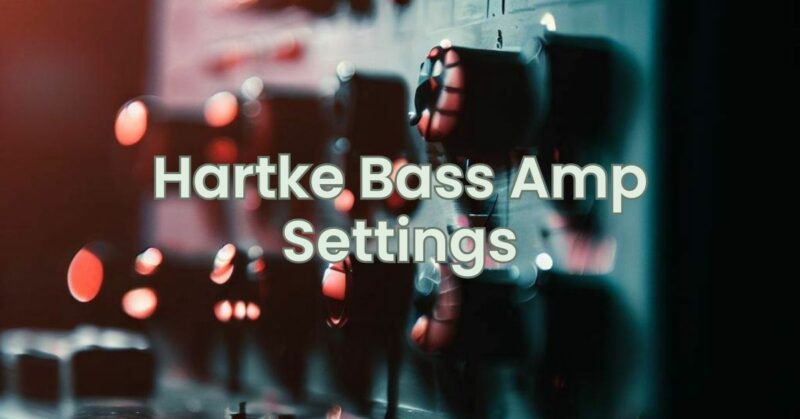Hartke bass amps are renowned for their powerful and versatile sound, catering to the needs of bass players across various genres and playing styles. Understanding how to optimize the settings on your Hartke bass amp is essential to achieving your desired tone and unleashing your full potential as a bassist. In this article, we’ll delve into the world of Hartke bass amp settings and provide you with insights, tips, and techniques to help you dial in the perfect sound for your bass playing needs.
- EQ Settings:
- Bass: The bass control allows you to shape the low-end frequencies of your bass tone. Increase the bass knob to add weight and depth to your sound, ideal for genres that require a powerful low end. Decrease the bass knob for a cleaner and more balanced tone, suitable for styles that demand clarity and precision.
- Treble: The treble control adjusts the high-end frequencies of your bass tone. Boosting the treble knob enhances the brightness and articulation, perfect for cutting through the mix and adding presence. Lowering the treble knob produces a warmer and smoother sound, ideal for genres that require a more rounded and mellow tone.
- Midrange: The midrange control allows you to shape the mid frequencies, which are crucial for defining the character and presence of your bass tone. Experiment with the midrange knob to find the sweet spot that brings out the desired punch and clarity. Increasing the midrange adds definition and bite, while reducing it creates a more scooped and vintage tone.
- Shape and Contour Controls:
- Shape Control: Many Hartke bass amps feature a “Shape” or “Contour” control, which offers a quick and convenient way to sculpt your tone. This control combines EQ adjustments to enhance or cut specific frequencies, allowing you to quickly dial in a preset sound that suits your style. Experiment with the shape control to find the setting that enhances your desired tone characteristics.
- Gain and Overdrive:
- Gain Control: Hartke bass amps often provide a gain control that allows you to introduce mild to heavy overdrive. Adjust the gain control to add grit and saturation to your bass tone. Lower gain settings offer cleaner and more transparent sound, while higher gain settings introduce distortion and growl. Experiment with the gain control to find the level of overdrive that suits your musical style.
- Compression:
- Built-in Compression: Some Hartke bass amps come equipped with built-in compression, a valuable tool for controlling dynamics and ensuring a consistent and balanced bass sound. Experiment with the compression settings to even out the volume levels and sustain of your bass notes. This will help your basslines sit well in the mix and provide a solid foundation for your playing.
- Experimentation and Personalization:
- Room Acoustics: Remember that the acoustics of your playing environment can greatly impact your bass tone. Experiment with your amp’s settings to compensate for room characteristics and achieve the desired sound. Consider adjusting the EQ settings based on the venue or studio you’re playing in to optimize your tone.
- Playing Style and Genre: Different playing styles and genres call for different bass tones. While these settings provide a starting point, don’t hesitate to experiment and personalize them to suit your specific musical preferences. Listen closely to how adjustments affect your sound and explore the full potential of your Hartke bass amp.
Understanding and mastering the settings on your Hartke bass amp is crucial to unlocking your desired tone and expressing your unique musical voice. Experiment with the EQ settings, shape controls, gain, and compression to find the sweet spot that suits your playing style and musical genre. Take advantage of the versatility and power of your Hartke amp to shape your bass tone to perfection. With time, practice, and exploration, you’ll find the settings that bring out the best in your playing and inspire your musical journey.

